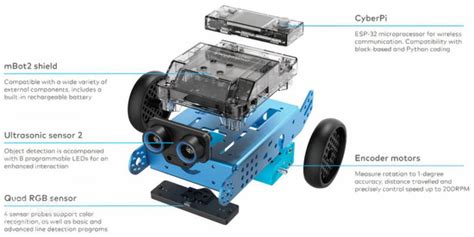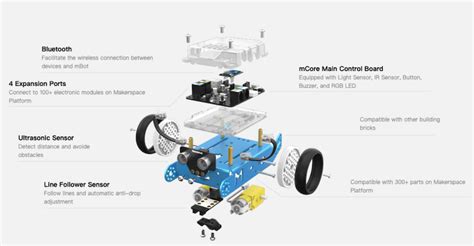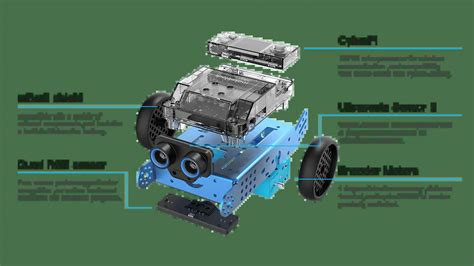In the evolving landscape of remote work, the need for precision and accuracy in communication has never been more critical. Whether it’s setting up a home office, coordinating design layouts, or ensuring consistent production standards, accurate measurements play a vital role in achieving seamless collaboration across distances. Tape measures, often overlooked, are essential tools that bridge the gap between physical spaces and digital communication, enabling teams to maintain accuracy in their workspaces. From traditional tape measures to advanced digital options, these tools have become indispensable in remote settings. This article explores how tape measures enhance remote communication, offering practical insights and tips to help businesses optimize their remote work environments.
Embark on a detailed exploration of this topic with xipres.xyz
1. Importance of Accurate Measurements: Highlight the necessity of precise measurements in remote work setups.
Remote work environments demand meticulous accuracy in measurements to ensure project success. The absence of physical proximity between team members eliminates the ability to readily verify or compare spaces and objects in real time. Consequently, precise measurements become paramount to avoid miscommunication or errors. Such inaccuracies can result in costly delays, necessitate redesigns, or even lead to the complete failure of a project.
Businesses heavily reliant on spatial accuracy, including interior design, architecture, and manufacturing, benefit immensely from precise measurements. These measurements serve as a common ground, ensuring all team members, even those geographically dispersed, operate from the same understanding. Accurate measurements facilitate the creation of consistent, reliable standards, fostering clear communication and shared comprehension amongst all stakeholders. This consistency becomes particularly crucial when multiple teams collaborate on different aspects of a project, enabling seamless integration and a cohesive final product.
Furthermore, in remote work environments, where tools and resources are predominantly shared digitally, accurate measurements are crucial for maintaining the integrity of digital designs and plans. Precise measurements eliminate the need for repeated adjustments, streamlining workflows and boosting overall productivity.

2. Choosing the Right Tape Measure: Discuss various types of tape measures and their specific applications.
Choosing the right tape measure is crucial for accurate measurements in remote work environments. The variety of tape measures available makes it essential to understand their specific applications to select the most appropriate tool for the task. Traditional tape measures, typically crafted from metal or fiberglass, excel in general applications such as measuring furniture, rooms, and outdoor areas. Their durability and reliability make them an indispensable tool across many industries.
Laser tape measures offer precise digital measurements over long distances, ideal for specialized needs. These tools prove particularly useful in scenarios requiring the measurement of large spaces or hard-to-reach areas, such as in architecture or construction. Additionally, their quick, single-person operation makes them valuable in remote work environments.
Beyond traditional and laser tape measures, some models offer digital displays and memory functions, facilitating the recording and sharing of measurements with remote teams. When selecting a tape measure, factors such as the required distance, the environment, and the desired accuracy level should be taken into account. Choosing the appropriate tape measure can significantly improve productivity and accuracy in remote work environments.

3. Digital Tape Measures: Explore the benefits of using digital tape measures for remote work.
Digital tape measures have transformed measurement practices, especially in remote work environments where accuracy and efficiency are crucial. Unlike their traditional counterparts, digital models provide enhanced features that simplify the measurement process and minimize the risk of errors.
Digital tape measures offer a significant advantage: instantaneous, precise readings displayed clearly on a screen. This eliminates the potential for errors that can arise from manual interpretation of measurements. In remote work settings, where collaborative teams depend on accurate shared data, digital tape measures ensure consistent and reliable measurements.
A further benefit lies in the ability of certain digital tape measures to store and retrieve measurements. This proves especially helpful during intricate projects requiring numerous measurements that need to be accessed later. Certain models even permit the direct transfer of data to smartphones or computers, streamlining communication among dispersed teams.
Digital tape measures offer a wider range of functionality than traditional ones. They allow for unit conversion, area and volume calculations, and even single-user distance measurement. This versatility proves particularly useful in remote work settings, where efficiency and precision are paramount.
Digital tape measures significantly boost remote work efficiency. By delivering accurate, readily shareable measurements, they minimize the potential for errors and ultimately enhance project outcomes.

4. Sharing Measurements Remotely: Tips on effectively sharing and communicating measurements with team members.
In remote work environments, where team members operate from diverse locations, effective communication of measurements is paramount. To guarantee the accurate sharing and comprehension of these measurements, adherence to certain key practices is essential.
To begin, utilize digital tools that streamline measurement sharing. Many digital tape measures feature Bluetooth or Wi-Fi connectivity, facilitating direct data transfer to smartphones, tablets, or computers. These devices often integrate with apps that enable annotation, organization, and real-time sharing of measurements with team members. This minimizes the possibility of miscommunication and ensures everyone is working with consistent data.
Secondly, ensure your measurements are always presented within context. When sharing data, accompany it with a concise description of what the measurement refers to, and supplement with appropriate images or diagrams if necessary. This practice helps avoid ambiguity, particularly in the context of intricate projects involving numerous measurements.
Third, ensure clear protocols for recording and sharing measurements are established. Standardizing units of measurement, such as consistently using inches or centimeters, and formats for reporting can prevent misunderstandings. Implementing a shared digital workspace where all team members have access to and can update measurement data as needed is recommended.
Finally, it is crucial to double-check measurements before sharing them. This careful verification guarantees the accuracy of the information being disseminated, thereby preserving the project’s integrity and fostering trust among remote team members.
5. Integration with Other Tools: Explain how tape measures can be integrated with digital tools and software.
Combining tape measures with digital tools and software can dramatically improve the efficiency and accuracy of remote work. Many contemporary tape measures, especially digital models, feature connectivity options like Bluetooth or Wi-Fi, enabling them to integrate seamlessly with a wide range of devices and applications.
A primary advantage of this integration is the seamless transfer of measurements into various software platforms, including design applications, project management tools, and cloud storage. This streamlined process enables, for instance, the direct upload of data from a digital tape measure to CAD software, facilitating the creation of highly accurate drawings or models. By eliminating manual data entry, the potential for errors is minimized, leading to a more efficient workflow.
Furthermore, these measurements can be seamlessly integrated into project management platforms such as Trello or Asana. This enables their assignment to specific tasks, allowing for comprehensive tracking and sharing with team members. Consequently, managing and coordinating remote projects becomes more efficient, as everyone has access to the most current information.
In addition, certain digital tape measures integrate with augmented reality (AR) apps, enabling users to view measurements in real-time within a virtual setting. This feature proves especially valuable in remote work environments where teams must collaborate on spatial planning or design projects.
By combining tape measures with digital tools, remote work teams can enjoy enhanced collaboration, accuracy, and productivity.
6. Best Practices for Using Tape Measures: Provide guidelines for correct usage to ensure accuracy.
To ensure accurate measurements when using tape measures, adhering to best practices is crucial. The following guidelines will help you achieve precise results:
Choosing the Right Tape Measure:
When selecting a tape measure, consider the specific task at hand. A standard retractable tape measure is suitable for general purposes. For more specialized needs, such as measuring long distances or requiring digital recording, a laser or digital tape measure is recommended.
Calibration is Key: Regularly inspect and calibrate your tape measure, particularly if it’s a digital model. This ensures accuracy, minimizing the risk of measurement errors.
Measure Accurately: To ensure precise measurements, hold the tape measure securely and keep it straight and level. Avoid any bending or twisting of the tape, as this can result in incorrect readings. It is crucial that the tape is fully extended and placed accurately against the object or surface being measured.
Record Measurements Promptly:
To ensure accuracy and prevent errors, record measurements immediately after taking them. This helps avoid forgetting or misinterpreting the data. When using digital tape measures, take advantage of their built-in features to save and organize your measurements efficiently.
Maintain Consistency with Units: Always use the same units of measurement (such as inches, centimeters, or any other standard unit) consistently throughout your project to ensure accuracy and avoid confusion.
Double-Check Measurements: To ensure accuracy, it is crucial to measure multiple times. This allows for the identification of any discrepancies and helps guarantee that the measurements are correct before proceeding.
Following these best practices will improve the accuracy and reliability of your measurements, leading to smoother and more successful outcomes.
7. Case Studies: Present real-life examples of businesses successfully using tape measures in remote settings.
Tape measures prove their worth in remote work settings, as case studies demonstrate their ability to boost efficiency and accuracy.
A prime example is an architectural firm that embraced remote work during the pandemic. To maintain project accuracy, they implemented digital tape measures with Bluetooth capabilities. These tools facilitated instant measurement capture and sharing directly with their design software. Consequently, the firm could continue working on extensive projects without interruptions, guaranteeing all team members access to precise and current data.
A furniture design company faced the challenge of adapting to remote collaboration. They achieved this by integrating digital tape measures with cloud-based project management tools. Designers utilized the tape measures to capture the dimensions of prototypes, which were then uploaded to a shared digital workspace. This integration facilitated seamless communication between remote designers and manufacturers, resulting in reduced errors and a more streamlined production process.
In a third instance, a construction company implemented laser tape measures for remote site assessments. These measurements were then integrated with augmented reality apps, allowing project managers to visualize and plan construction layouts with enhanced accuracy. This method significantly reduced the necessity for on-site visits and facilitated better coordination between the remote planning team and the on-site workforce.
These case studies demonstrate the effectiveness of tape measures, especially digital and laser models, in bolstering remote collaboration and maintenance operations within businesses.
8. Future of Measurement Tools: Discuss emerging technologies and innovations in measurement tools that could benefit remote communication.
The future of measurement tools holds immense promise for enhancing remote communication and collaboration. Emerging technologies are revolutionizing these tools, making them more versatile and efficient for those working remotely.
A significant innovation is the creation of advanced laser tape measures that incorporate augmented reality (AR). These tools enable users to project digital measurements onto physical spaces in real time, offering a more intuitive way to visualize and plan projects remotely. AR-enhanced measurements can be shared instantaneously with team members, leading to better coordination and fewer errors.
A significant development involves integrating artificial intelligence (AI) with measurement tools. AI’s ability to analyze and interpret measurement data provides predictive insights and automatic error detection. This integration streamlines complex measurement tasks while enhancing accuracy.
Additionally, the rise of Internet of Things (IoT) technology is enabling smart tape measures that connect with other digital devices and systems. These smart tools can automatically sync measurements to cloud platforms, ensuring that all team members have access to the latest data in real-time.
These innovations are set to transform how measurement tools are used in remote work, making collaboration more seaml
Accurate measurements are vital for successful remote work, ensuring precision and efficiency across distributed teams. By choosing the right tape measure, leveraging digital tools, and integrating with other software, businesses can enhance their remote communication and collaboration. Adhering to best practices and exploring emerging technologies, such as AR and AI-enhanced tools, further improves accuracy and workflow. As remote work continues to evolve, staying informed about the latest innovations in measurement tools will help teams maintain high standards of precision and productivity, ultimately contributing to project success.
xipres.xyz